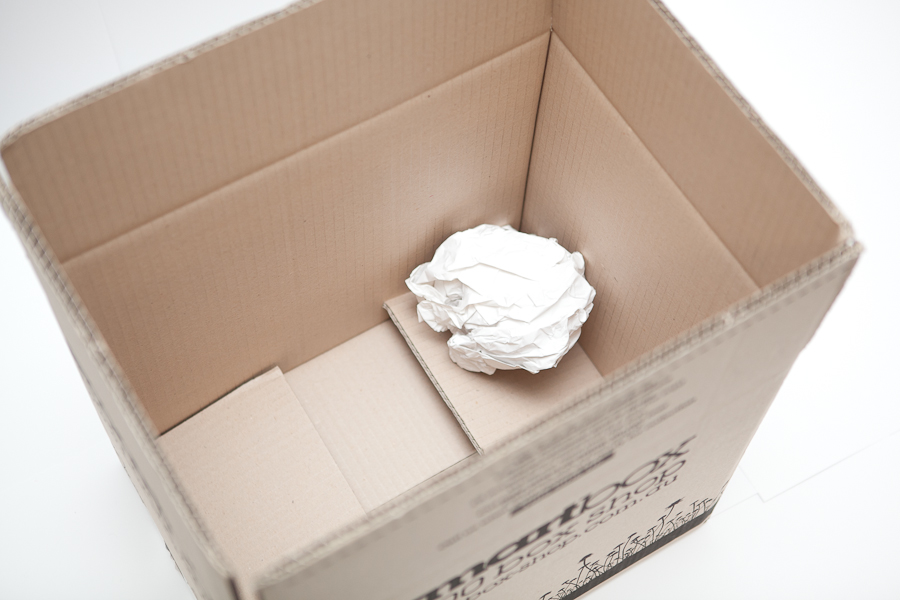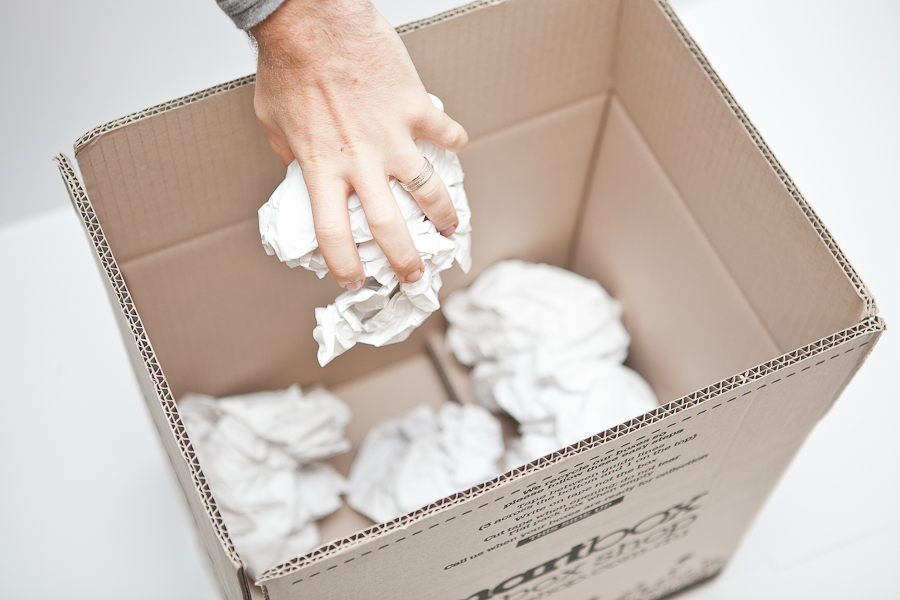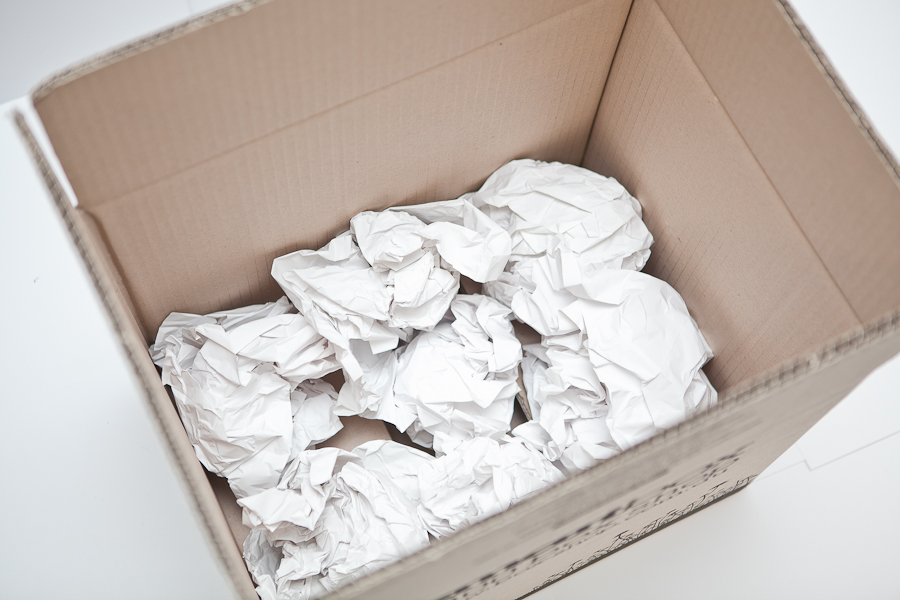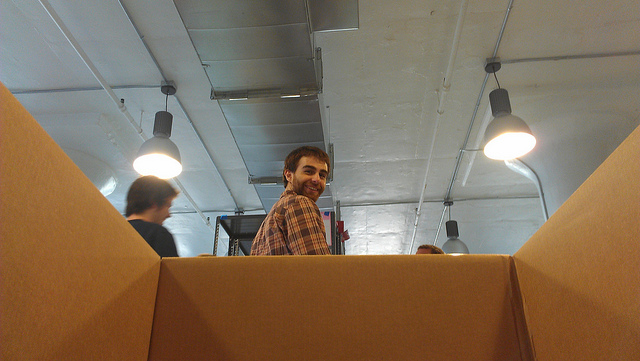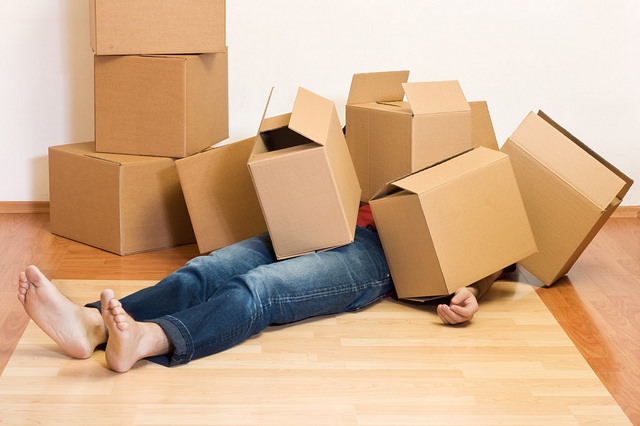Quick Quote
Packing Boxes
Packing Boxes
Removal boxes – there is a difference!
Choosing good strong double-walled removal boxes for the job is just as important as choosing the right removalists when you’re moving house. You’d be heartbroken if the bottom of the box holding your wedding china gave way, leaving a heap of shattered crockery on the floor.
It’s also important to use the right size box when you are packing. And don’t overload them – no matter how sturdy they are – they’ll become difficult to carry and more likely to break.
Remember these 4 Golden Rules
1. Always pack your belongings into removal boxes where possible
This makes transportation to and from the truck easier and, like a game of Tetris, it’s easier to stack regular shaped items than trying to put together a jigsaw puzzle of different sizes and shapes. It will also ensure all areas of the truck are filled, which will minimise dead space.
Removal boxes are, by design, made for the industry and have double walls, ensuring the box is strong and durable. Having double walls also makes the box stronger and less likely to be damaged. Removal boxes are also designed to be stacked on top of each other without collapsing – this is a basic requirement for any removal box.
2. If you can’t lift it, lighten the load
A common mistake is trying to cram as much as possible into removal boxes, which could spell disaster. Not only is it going to be too heavy to lift, but too much weight could weaken the box and it could break.
“The guide we use is: If you can lift it once, our guys can lift it all day,” says Dominic Rowswell, owner of Sydney-based removal company, Smartmove.
3. Take extra care with your breakables
- If you’re packing yourself, the Smartmove experts recommend you use plenty of paper.
- When packing breakables, place a layer of screwed-up packing paper (crush) at the bottom of the removal boxes.
- Carefully wrap your breakables in packing paper and place on top of the crush.
- Also put crush in between items to prevent them moving around inside the box,
- Tuck some into the sides and finish with a layer on top before taping the box shut.
4. Don’t be afraid of using more boxes than you’ll think you’ll need
Don’t skimp on the number of boxes you need, nor the quality. It’s better to spend a few extra dollars on buying boxes from your movers than replacing an item that gets broken because it’s been crammed into an inferior box.
Supermarket boxes are not designed to handle household goods, so specialist removal boxes are well worth the investment. Ask your movers what they recommend. Remember they’re there to help you.
Types of boxes
Book boxes
These are the smallest removal boxes and should be used for smaller/heavy items and correctly wrapped fragile items.
Things you might pack into a book box are:
- Books (obviously)
- Kitchen crockery, utensils and cutlery and appliances,
- Vases, trinkets, photo frames and small breakables
- Anything else that fits into the box
Tea chests
These medium-sized removal boxes are for items that are less likely to break. But don’t pack your entire collection of cast-iron pots into one box and expect it to hold. Balance heavier items with lighter things so the box doesn’t become unmanageable. Lift the box to check the weight as you go.
Tea chests are ideal for:
- Linen, pillows, duvets and soft furnishings
- Plastic kitchen items
- Saucepans, shoes, boots, games and children’s toys
Portarobes
These large, upright removal boxes with a clothing rail are used to transport clothing on coat hangers.
Simply transfer your clothes from your wardrobe rail straight onto the portarobe rail, then at your new home transfer your clothes onto your new wardrobe rail, easy!
They are a great way to save time on packing and will keep your clothes crease-free while in transit. Light weight items will fill the whole rail whereas jackets and other heavy clothing will need spacing out.
Remember not to overload your wardrobe boxes as they could break when being lifted.
Your removalists will probably bring the portarobe boxes along on the day of the move as they are quick and easy to assemble. But if you want a head-start, you can request for them to be delivered earlier.
Don’t forget to clearly label all your removal boxes with their contents and which room they belong in. Use a piece of tape on the top of the box and mark it clearly with a permanent marker (other ink can be easily rubbed off).
Now you have some awesome advice from the experts, your packing should be pain-free. Remember that although packing is time-consuming, it’s worth doing properly. By following the Golden Rules and making sure you use the right kind of box you’ll be assured of getting the job done. Happy Moving!
Oh Dear, It Looks Like Rain! And We’re Moving Today!
Oh Dear, It Looks Like Rain! And We’re Moving Today!
You’ve planned meticulously and everything is on track for a seamless move, except that on moving day it’s bucketing down. The one thing you can’t control is the weather, so what do you do now to prevent damage to your furniture and boxes?
Follow the weather report
Take into account the season you’re moving in, and follow the weather reports for the week before your move to keep an eye out for bad weather.
Although they can give you some sort indication of what to expect, everyone knows that weather forecasts aren’t foolproof. Even when bright, sunshine is predicted, you may wake up on the day of your move to cloudy skies and showers.
Protecting your things
If it is wet, your removalists will be able to provide a good supply of plastic covers for your mattresses, bed bases, chairs and sofas. These covers can be used for other items as well, just ask your removalists to bring them on the day. Moving blankets will cover your furniture and goods but bear in mind they are not waterproof.
Items such as mattresses and other soft furnishings are likely to develop mould and mildew if they get damp. Good removalists will recommend using mattress and sofa covers, especially in the rain.
If the long-term forecast does predict rain on moving day, let your removalists know in advance, so they can put moving blankets on the floors to protect your home while the move takes place.
Boxes are definitely not waterproof, and the last thing you want is for the bottom to fall out of your boxes because they’ve got soggy, make sure you tape the boxes appropriately, don’t skimp on tape!
Your removalists should park their truck as close to the house as possible, so furniture and boxes don’t have to stand outside in the wet.
Electronic equipment like computers is particularly sensitive to water damage. So give them an extra layer of bubble wrap. Don’t forget to take care of your smaller items like laptops, DVD players and radios too.
Outdoor furniture is likely to be soaked if it has rained overnight. Move them under shelter if you can, and wipe them down, so they are not loaded wet.
Also if you’re moving outdoor plants and they are too heavy to move under cover, put a large bin liner over them and cover the base so the plant doesn’t get too waterlogged prior to the move. The last thing you want is water and soil leaking in the truck and damaging your other items.
When you arrive at your new home, ask your removalists if it’s possible for them to place your goods in rooms close to the entrance first to prevent too much mud and other debris being tracked into the rest of the house.
Safety first
Besides keeping your possessions safe, there’s also the human factor to consider. Navigating awkward items between point A and point B is difficult enough without wet slippery surfaces thrown into the mix.
Break out your hiking boots or other closed shoes with a good grip.
There will be a constant stream of people through both your old and new house. Put down old sheets and towels at the entrance.
They’ll not only protect your carpets and floors from mud and water, but prevent slipping accidents.
Don’t try to hurry your move along, this will invariably slow things down and accidents are more likely to occur.
Unfortunately there isn’t any real solution for moving in wet weather other than your removalists protecting your goods and being cautious to the best of their ability. Have plenty of towels available to dry off. And if it’s cold too, have a good supply of hot drinks.
Image courtesy of JustyCinMD,Flickr,CC BY 2.0
How To Ace Your Office Move
How To Ace Your Office Move
There’s good news and bad news!
First the good news. Your company is growing at a significant rate of knots – the bottom line looks great and you have loads of happy customers.
The bad news is your people are practically sitting on top of each other in your current office and negotiating desks, people and equipment to get to the coffee machine is becoming a mission.
So, now’s the time to make the big move.
The Plan
Assuming you’ve already got your new premises all lined up, the first step is to have a well thought-out plan of action that will create as little disturbance to your productivity as possible, which could ultimately affect your bottom line.
A good rule of thumb is to start planning your move 4-6 months before D-Day (or rather M-Day)..
Get quotes on costs and set a budget.
Next, set the date and book your removalist.
Bearing in mind that most people are nervous about change it’s important to keep your staff in the picture by communicating the details of your office move as you go along.
Treat your move as you would any other project your company would undertake and use your resources – rope in staff to help with everything that needs to be done.
Depending on the size of your company, it would be a good idea to appoint a project leader in each department to make sure everything runs smoothly.
The Execution
Moving office comes with its own set of challenges and a good checklist is crucial to make sure all your bases are covered.
Logistics
Your office move not only impacts on your own company, but if you’re in an office park or block it could disrupt other businesses in the building.
For starters, find out if there are any restrictions on moving in or out from the building managers. Remember moving office is a two-step process – so clarify the building regulations at both your new and old premises.
Find out whether you can move during office hours. Some building management company’s don’t allow office moves during normal business times due to the disruption factor and inconvenience to other tenants.
The best thing to do is to establish what the rules are, and coordinate well in advance with your removalist company if you have to plan an after-hours move.
Also find out from your removalist if there are any additional charges involved if you plan to move at night or over the weekend.
If you’re in a multi-storey building, find out from the building managers whether you need to book the goods lift for your office move, and how far in advance the booking needs to be done at both ends of your move.
Also get information on how many lifts you can use as well as if you have exclusive use, these are things your removalist will want to know.
Investigate whether your current or future building has a loading dock. You’ll need to let your removalist know its height so that they can organise the right truck size for the move.
If the loading dock is accessible through an underground garage, find out the clearance restriction and let your removalist know this too.
Ask how far in advance you need to book the loading dock, if at all.
Paperwork
Either (or both) your current or new building could be access controlled, therefore the management company may require details about the removalist team (company name and contact number) in order to issue passes or key cards.
In most cases, your removalist company will also have to produce their public liability and workers compensation certificates to satisfy the building management.
Something else required from your removalist is a Safe Work Method Statement (SWMS). This is legislative paperwork which outlines the safety steps, main hazards, risks and controls associated with removing heavy objects such as furniture from residential and commercial premises.
Your removalist will also need to know whether you require on-site inductions (safety training documents) prior to the removal.
Packing
Ahh. Packing is probably the most… er… interesting part of any move. This is especially true of a commercial move because there’s electronic and IT equipment, paperwork and large heavy furniture to think about.
If your workstations have data and power running through them, you’ll need an electrician to disconnect the power. Your building management should be able to recommend someone.
Have you got any leased equipment such as a photocopier? You’ll need to contact the leasing company to check if the warranty requires that they move it. Often if you move leased equipment without the service provider’s permission you void your warranty.
Filing cabinets (hanging files) are very cumbersome and heavy, so they will need to be completely emptied prior to the removal. If you were thinking of relocating them while they are still full you face two problems:
(a) the hanging rails could break in transit, and
(b) the weight may exceed the limit allowed for the removal team to lift.
This means on the day of the office move, the files will need to be removed and packed into boxes which may slow down the entire removal process.
You may also think it’s unnecessary to clear pens, pencils and paperclips out of desk drawers.
But they do need to be emptied and the contents packed into boxes and/or zip lock bags, because your removalist quite often stack desks and drawers upside down on top of each other for transit, and things could fall out.
One of the easiest ways to make sure that all the boxes get to the right spot at your new office is to number them. After taping up a box, write a location/name/reference on tape on top of the box and not directly onto the cardboard. ALWAYS use a permanent marker on the tape as other pens will rub off easily.
Then create a template by printing out the corresponding numbers and a small description on A4 paper. Place it in the area where you would like your removal team to place the boxes.
The Conclusion
A commercial move can seem very daunting. There are more aspects to consider in terms of logistics, paperwork (including legal documents) and packing requirements. It boils down to planning well – knowing what you need to do and getting it done with minimum fuss.
Image courtesy of Becky Stern,Flickr,CC BY-SA 2.0
7 Quick Questions To Ask Your Removalist
7 Quick Questions To Ask Your Removalist
It’s not only best to choose a moving company that has a great reputation and a proven record for reliability, but value for money should also play an important part in your selection.
As part of this process, look for trustworthy references outside of the testimonials on their website. No one is going to put negative reviews from customers on their website are they?
So when you’re researching removalists, always check Google reviews for honest opinions on all elements of their service. Remember, you’re paying the moving company to do a job, so selecting a removalist is pretty similar to interviewing a new employee, you need good references.
When you’re moving house who better to talk to than a removalist to find out what you should be asking your prospective removalist company? Dominic from Smartmove – a moving company in Sydney – was put to the test when he answered a few questions.
1. Are your removalists reliable and trustworthy?
When people ask us if our guys are good, we say yes! They are the best.
Our guys are courteous, polite, hard working and can think for themselves with regards to etiquette and the customer’s needs.
Our client base is mid- to high-end and we move a lot of family homes so we only employ guys that we would be happy to have around our own children. We don’t employ people with offensive tattoos or those with a criminal record.
We also get asked if we use sub-contractors (removalists not employed by Smartmove but used when our bookings are full). We don’t.
Every one of our moves is undertaken by guys directly employed by us. That way we know you will receive the best service possible.
2. How much do you charge?
We don’t have any minimum charge whereas other removal companies can charge a minimum of 4-6 hours. We charge the hourly rate to the nearest 15 minutes. Another moving company might run by the whole hour.
Our hourly rate is mid-priced with NO hidden extras – we are very transparent with regards to the costs, so there are no surprises on the day.
The overall cost of the move is kept to a minimum due to the efficiency of the removalists. They are dedicated to your move and you won’t catch them slacking!
3. How long will it take?
We get asked this a lot.
The truth is every move is different, we’re not able to give an exact duration but we are able to provide an estimated time based on information we are given. This depends on the size of the property and how easy it is to move furniture and boxes from the property to the truck (including having to move stuff down stairs and using lifts).
Some people might understate the volume of boxes and furniture being moved when they make the booking and would therefore get an inaccurate moving time estimate. This may cause issues on the day you’re moving house, when it takes longer than expected.
Customers are obviously present at the time of their move and can see the guys working at their optimum pace, so rest assured they do not drag the jobs out.
We confidently say that our guys will get the packing and move completed in the best time possible whilst being mindful of your belongings. We are a family run and owned business and can relate to our customers on more of a personal level.
4. What about insurance?
According to Australia’s consumer protection laws, you have to be a licensed broker to offer an insurance policy to people and we are not. People can take out insurance either by using our broker or their home contents insurance.
We do, however, carry transit insurance in the unfortunate event that our truck is involved in an accident or rolls while we’re transporting your goods. The truck, the guys and your goods (excess of $500) are covered in these cases only.
5. What is the general policy with boxes for customers who are packing their houses themselves?
About 10% of our customers use our pre-pack and/or unpack service so they don’t have the stress of packing or getting their hands dirty
As 90% of our customers pack themselves we recommend that lots of packing paper is used, and don’t be economical with your boxes. Rather spend a few extra dollars on more boxes than trying to overstuff them.
6. How do you handle complaints from customers?
We address any concerns immediately and investigate whether the complaint is valid. We don’t hide anything and try to be as open as possible with our clients.
7. Finally, what would the most important piece of advice you’d give to people moving house?
Be prepared.
Finish your packing by the day before your move. Anything that still needs to be done on the day of the move could delay the process.
Use professional removal boxes only, you’ll find removal boxes are strong and stack well in the truck. Don’t use a mixture of sizes and/or weaker boxes from a supermarket – you’re giving yourself a false sense of security if you think you’ll save money this way. They’re more likely to break. Also if you have plastic tubs and want to use them for your move that’s fine, just be aware they are made of brittle material and may crack as they are not meant to be stacked and transported.
Try not to underestimate the time you think it will take to move, leave the hard work to your moving company and trust us to get it done in the best possible time. You won’t be disappointed!
Image courtesy of Nick Rice,Flickr,CC BY-ND 2.0
The Ultimate Smart Move Checklist When Moving Homes
The Ultimate Smart Move Checklist When Moving Homes
Preparing your move to your next home may seem like an endless obstacle course of packing, moving and paperwork. But with some careful preparation and forethought, it can be a seamless and low-stress process.
We have highlighted some essential home moving tips leading up to the day of your move to ensure you don’t miss any critical steps.
Six weeks to go.
1. Lock in a removalist.
2. Ask companies the following:
a. Do you subcontract the work out?
Here at smart-move we use all our own guys for the moves, we have personally selected all the guys and steer well clear of the tattooed face, smoking in your home traditional removalsits, all of our guys are fit and healthy and really nice natured people who we trust in our on home with our kids around.
b. What are your minimum hours on a job?
Here at smart-move we have a 1hr minimum for all removal work and a 4hr minimum for all pre packing / unpacking work
c. What increments do they run in?
At smart-move all of our removal work runs by the fifteen minute increments
3. Check Google reviews on companies to see how they score.
Google reviews are an impartial view of companies and the quality of work they provide.
4. Create a list of your items and decided on what’s coming or going.
Be ruthless. If items were gathering dust in your old place, why let them take up space in your new home? For those unwanted items consider a garage sale, e-bay or donating to charity.
5. Consider your insurance needs.
At smart -move removals we hold insurance that in the event of the truck overturning and/or being involved in an accident whilst your belongings are in transit should any damage to your property occur. This insurance comes with a customer excess of $500.
If you require complete cover while the items are being moved or stored by us we recommend you phone or email our broker and she will be happy to quote you: Belinda Bowkett, Insurance Advisernet. Phone: (02) 9954 1311. E-mail bbowkett@iaa.net.au
6. Start making a list of incoming mail.
This becomes a handy reference for changing your address later.
7. If you’re want to use our storage facility, its best to check to see how much space you will require by using our online storage estimator, found here
Smart-move offer short-term storage as well as long term. Just give Smart-Move removals and storage a call on 1300668387 and we would be happy to help
8. Time to start packing.
It’s always best to start as soon as possible to avoid any stress nearer to the move, even packing a couple of boxes a day will help
Four weeks to go.
1. Organise packing materials.
Here at Smart-move can provide you with boxes, packing materials and equipment delivery to your door at no extra charge.
We offer 1 free delivery and 1 free collection, we will drop a packing kit based on your size of house and you will be billed for what’s used on the day of your move. Then when you have unpacked and flattened the boxes call us and we will collect the boxes and a buy back applies. All prices and buy back rates listed here
2. Update your home insurance
Contact your home insurance company and ensure both homes are covered for the necessary periods.
3. Essential services.
Organise final meter readings with your utility companies and confirm connections to your new home.
Two weeks to go.
1. Reduce your food
Avoid the supermarket and focus on using up the food in your pantry, f ridge and freezer.
2. Remember the pets.
On moving day, it’s often easier for pets to be cared for by friends – now is a good time to arrange that.
One week to go.
1. Regular Deliveries
Cancel any regular deliveries and pack all but what you think you’ll need for the final week in terms of clothes, toiletries, linen and kitchen items.
2. Excess Rubbish
If the packing process has left you with a lot more rubbish than usual let us know and we would be happy to do a rubbish run for you.
3. Mail Redirection
Choose a reasonably long period so that important documents and bills don’t fall through the cracks.
4. Outdoor plants
Any out door plants that can get wet in rain should be covered in order for them to dry out a bit, or if your able to move them pull them into a protected area – it avoids water running around the truck with your furniture and also reduced the weight considerably
The day before.
If you have booked our women pre packing team for you move then this is the normal day we prefer, the smart-move women packing team will arrive 08:00-10:00 and pack what ever is necessary, we always like it when customers put items not required to be packed into one area so it makes it easier and quicker, they will leave you with boxes to put your linen, last items of kitchen (items you need for the last night) and any thing else you need to pack your self on the morning of the move.
1. Disconnect
We are more than happy to Disconnect your washing machine on the day of your move but if you want to save time/money then this is the day to do it.
2. Prepare appliances for removal
Ensure everything is shut down and fully disconnected, particularly any computers and laptops.
3. Fridge work.
Empty your fridge & freezer contents into an esky and clean the fridge thoroughly.
Pack any remaining items into boxes.
4. Parking.
If necessary, secure street parking for the removals truck.
On the day.
1. Secure valuables.
Carry your new and old keys, valuables and any important documents with you so they don’t get lost!
2. Final check.
Once everything is on the truck, do a final check of your old place to ensure that the home is clean, nothing has been left behind and all rubbish has been removed.
3. Relax.
Enjoy the first night in your new home.
Image Credit: Mark Moz, Flickr.


